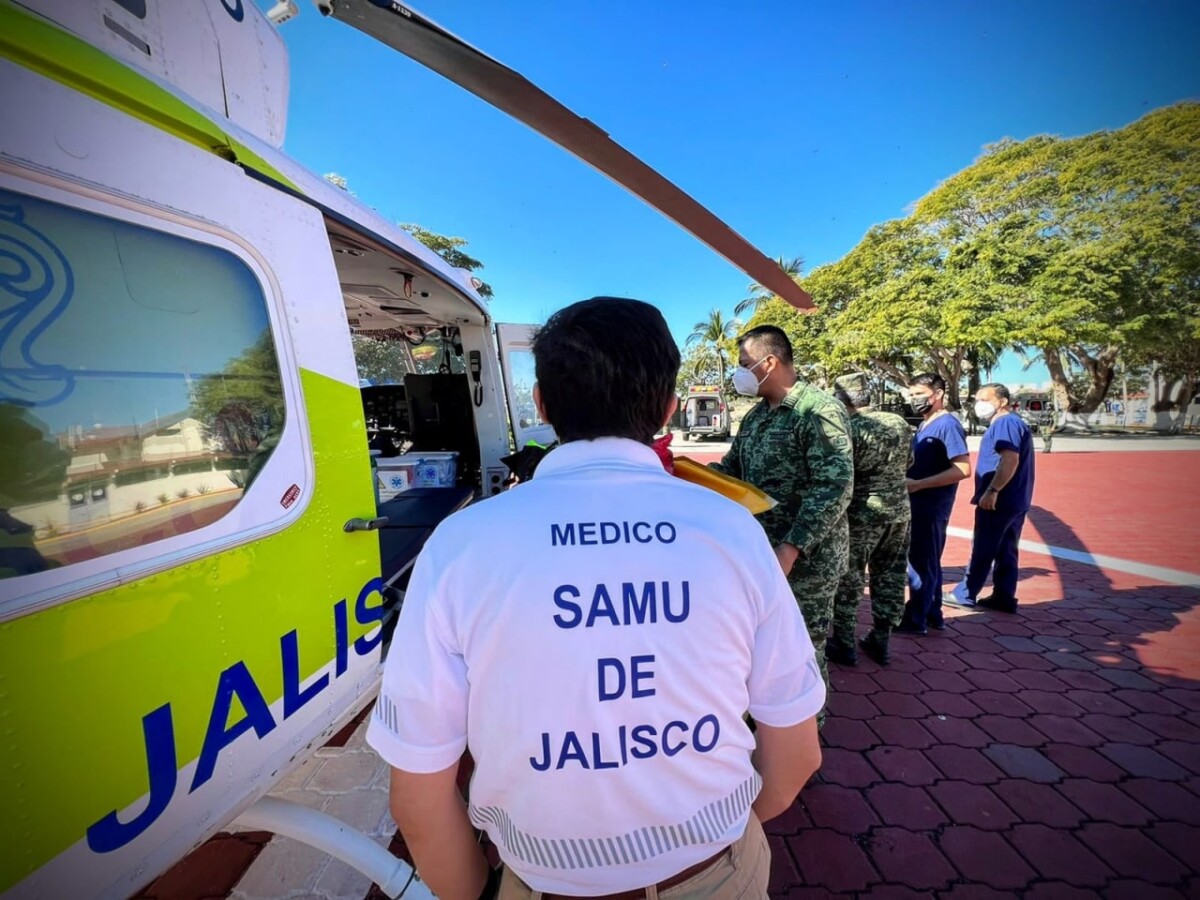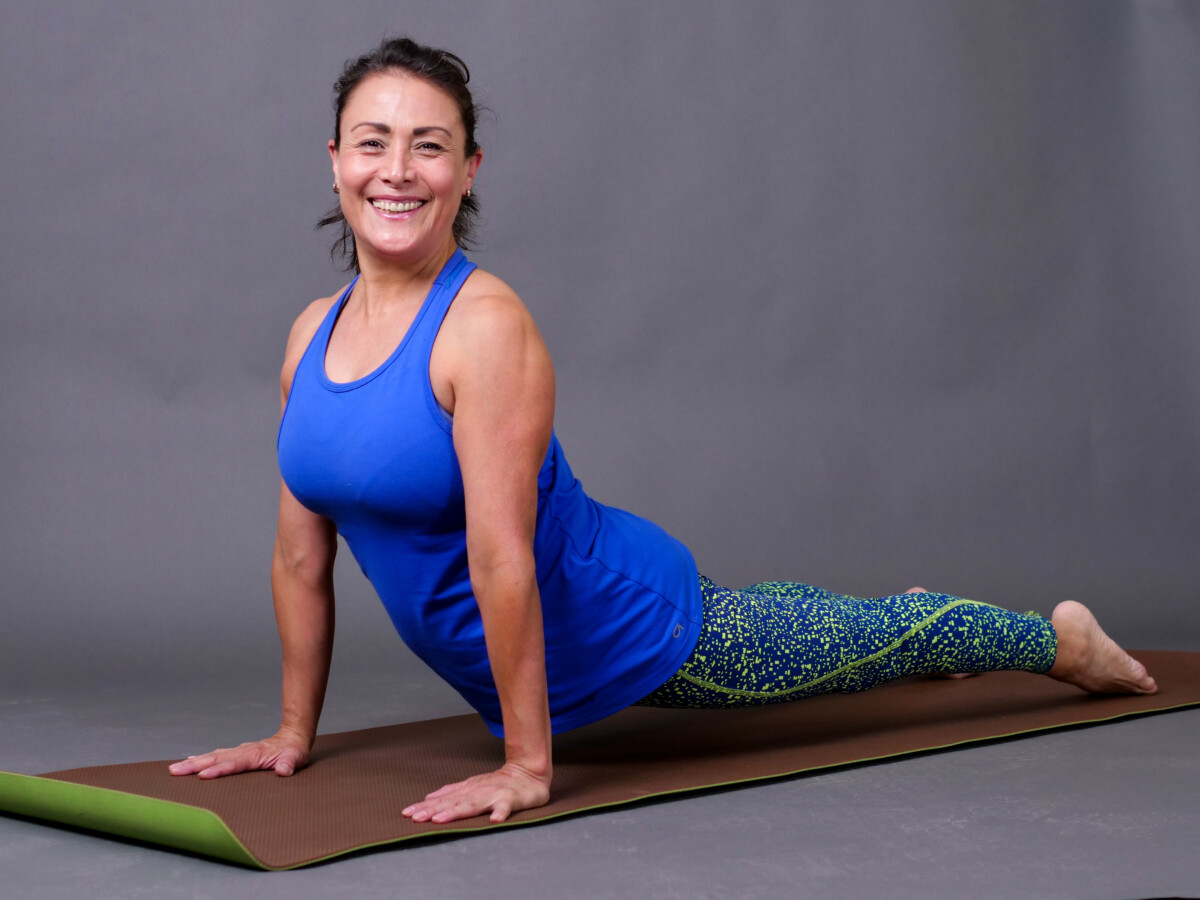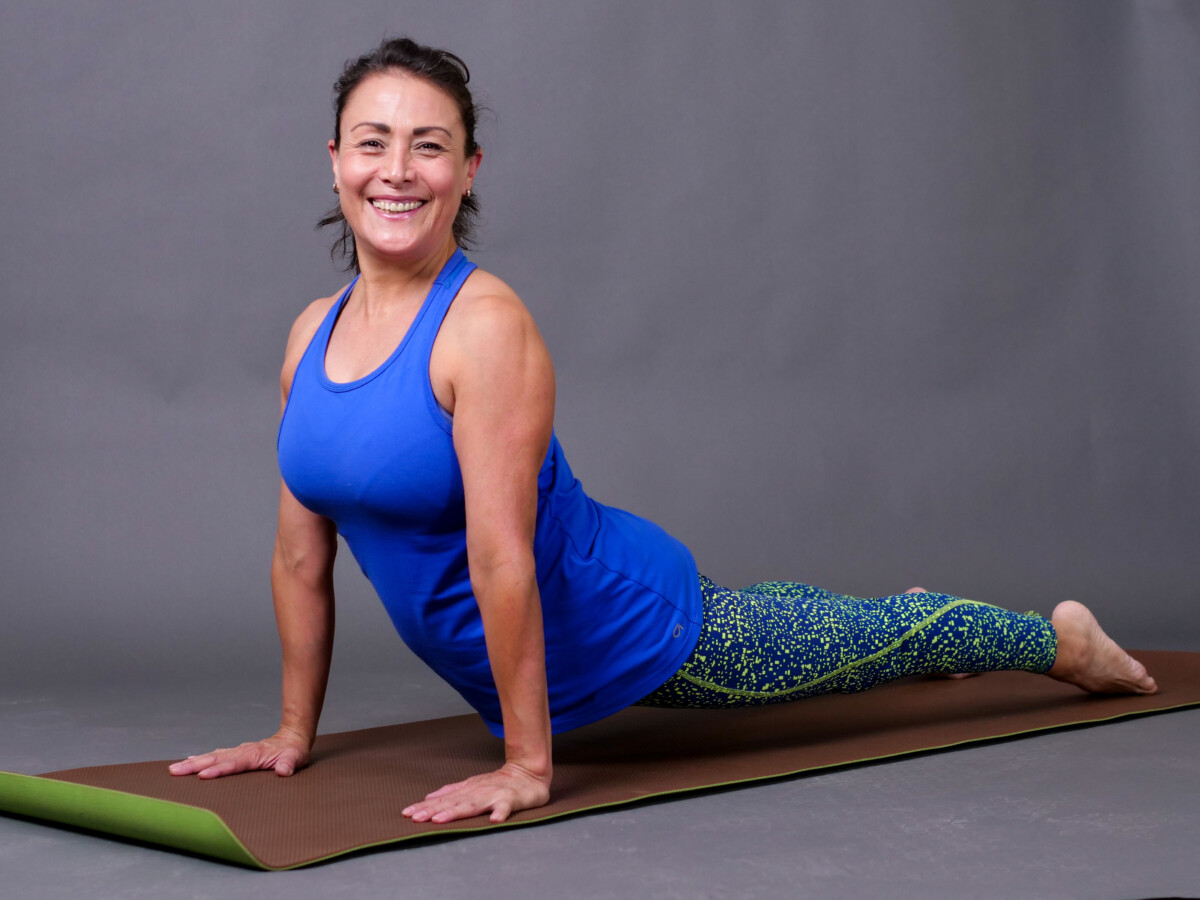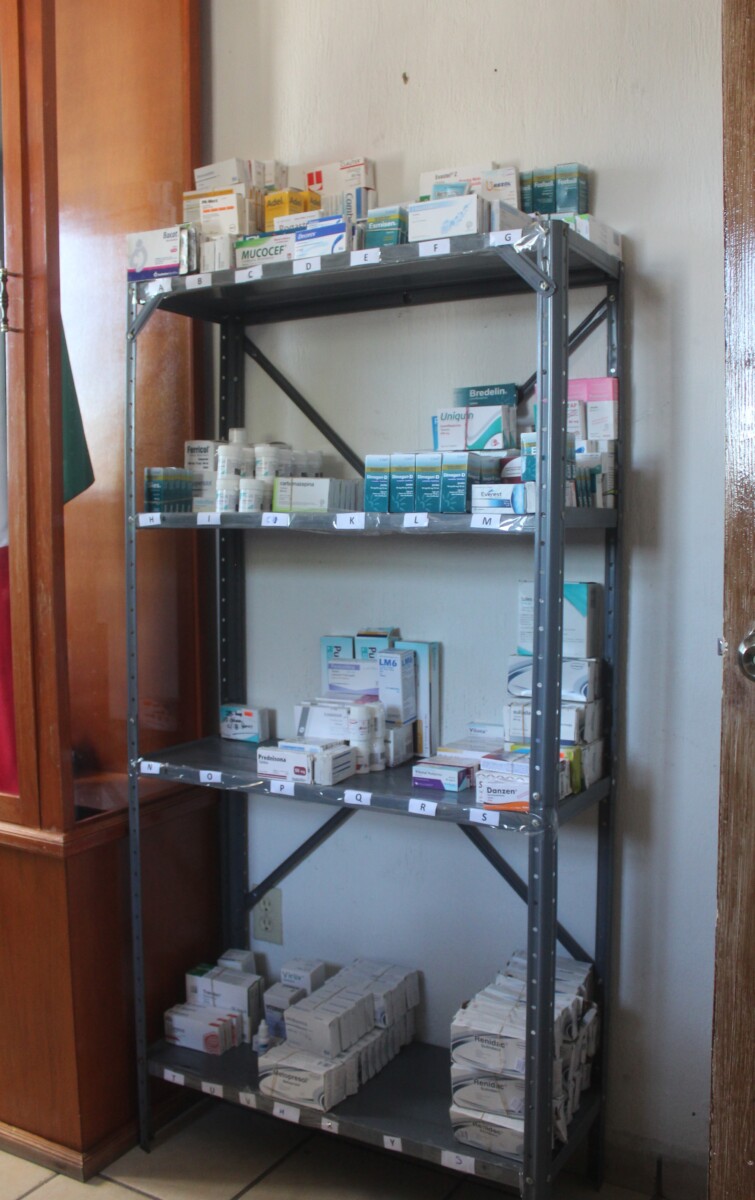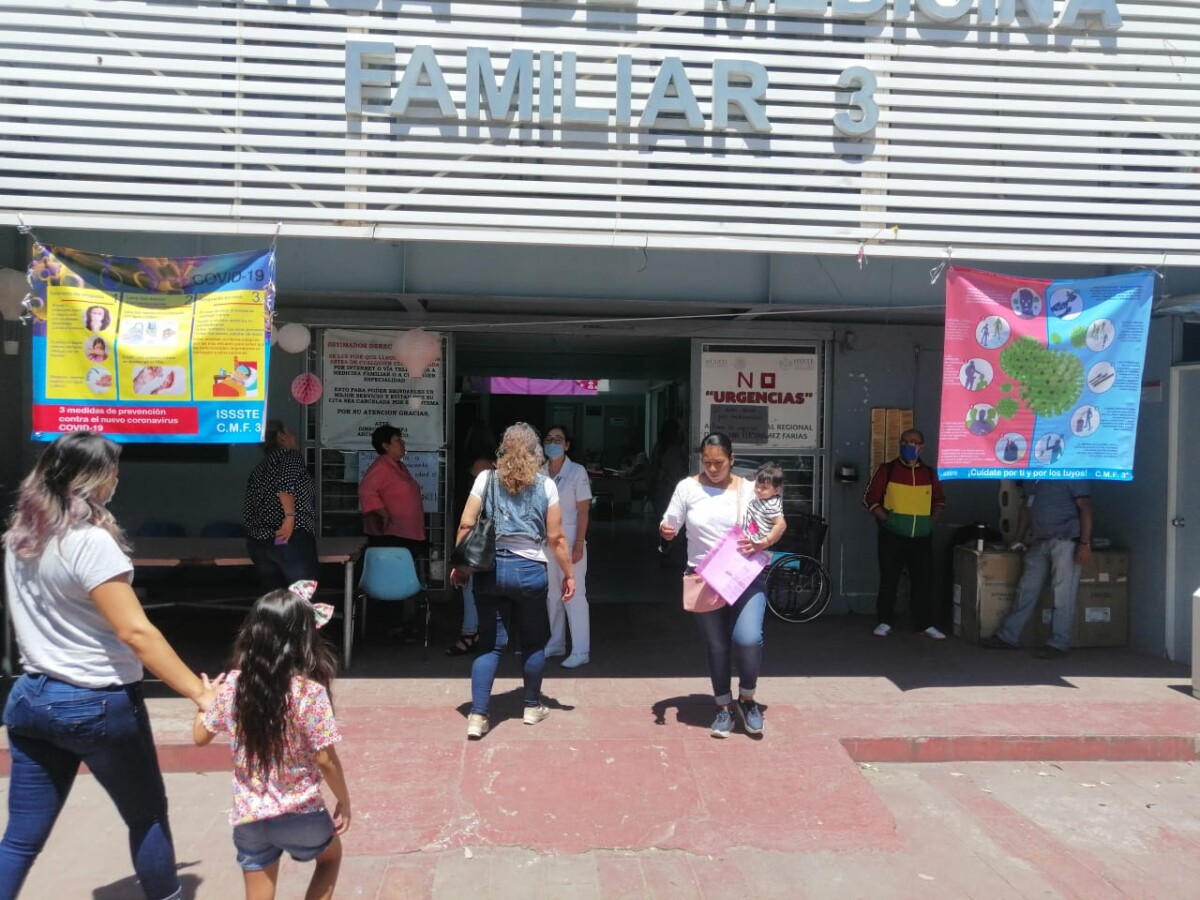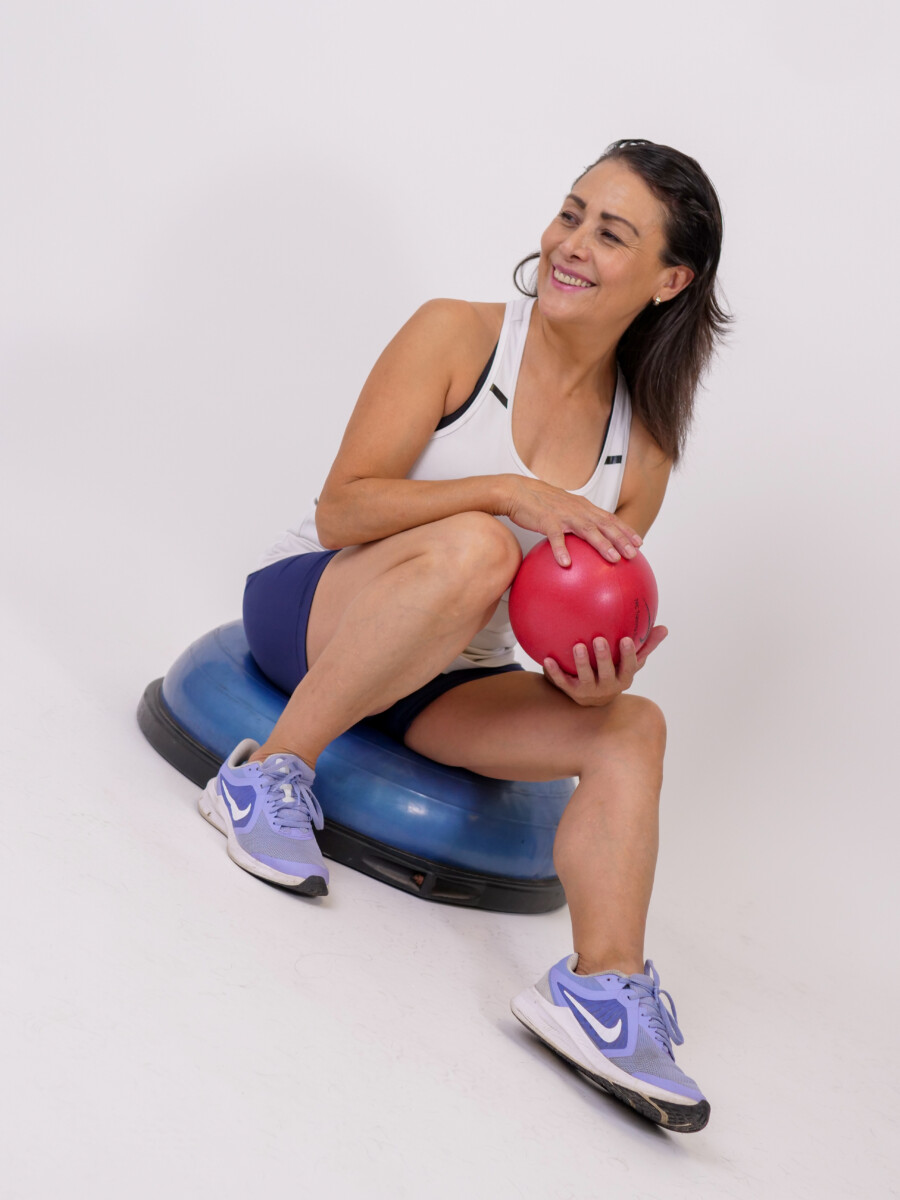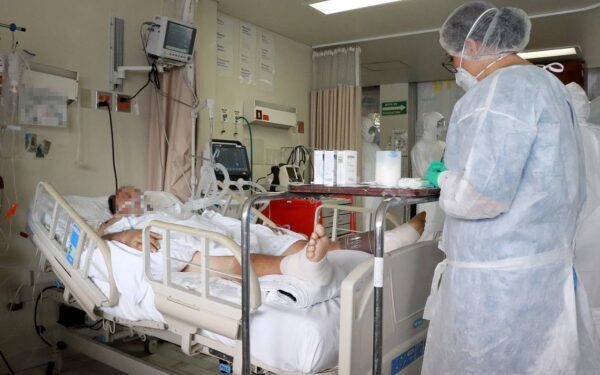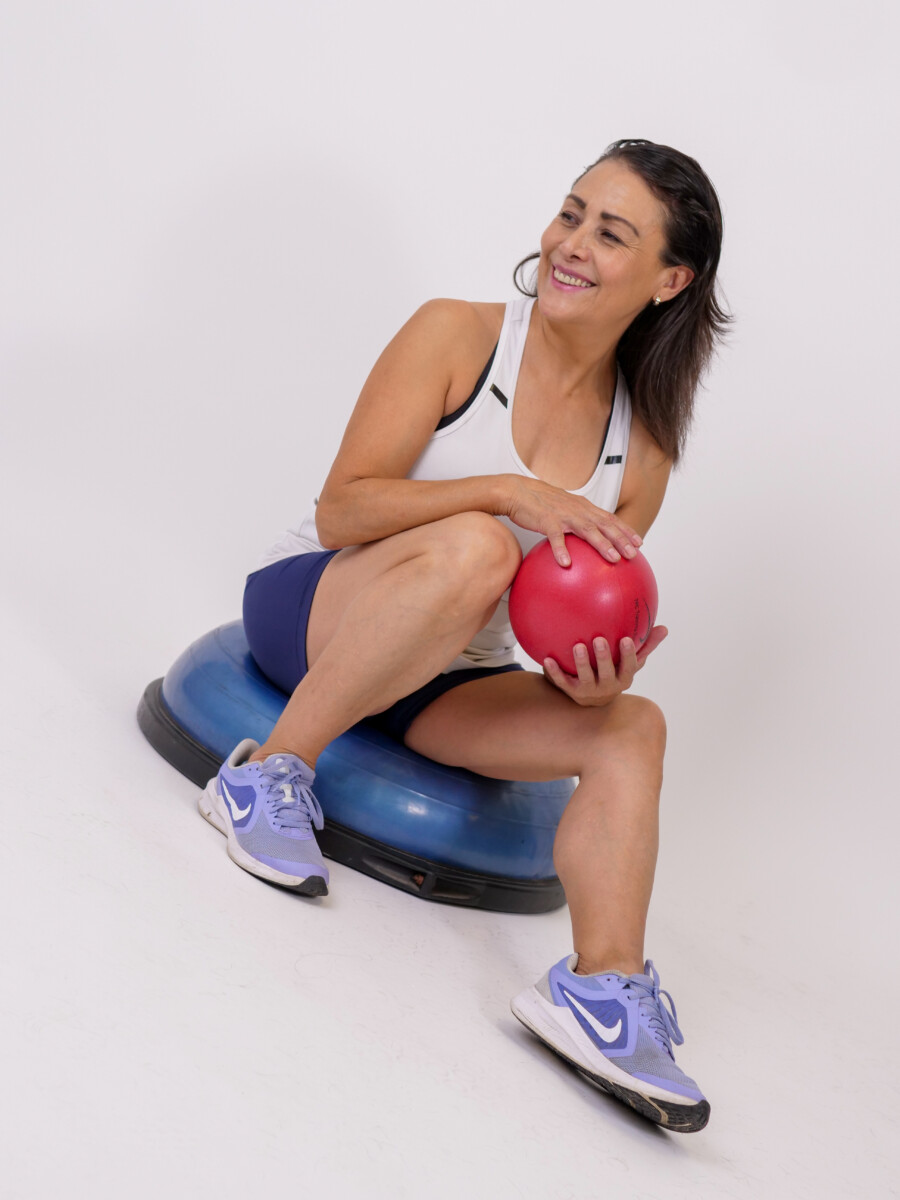Salud
Arranca operativo ‘Vacaciones Seguras’ de Semana Santa y Pascua 2022
El operativo busca reducir riesgos mediante la prevención de accidentes en carreteras, centros de recreación y el hogar. Foto: SSJ.
Redacción.- La Secretaría de Salud Jalisco (SSJ), a través del Consejo Estatal para la Prevención de Accidentes (CEPAJ) y la Dirección General de Salud Pública presentaron el operativo “Vacaciones Seguras” en el periodo de Semana Santa y Pascua 2022, que tendrá lugar del 08 al 17 de abril, con la intensificación de vigilancia para reducir riesgos a la salud por percances en el hogar, la vía pública, las carreteras y los centros de recreación.
Las lesiones y muertes provocadas por accidentes se incrementan en los periodos vacacionales, por lo que es 90 por ciento prevenible si se mantienen las alertas en el hogar, la vía pública y los centros recreativos, sostuvo el coordinador operativo del CEPAJ, José Parra Sandoval.
“La exposición a factores de riesgo que provocan accidentes se incrementa hasta en 20 por ciento durante el periodo vacacional de primavera, por lo que se hace un llamado a la población para prevenirlos y disfrutar de manera segura los días de descanso, así como para que se esfuercen por la autoprotección”, agregó en rueda de prensa virtual realizada el pasado cuatro de abril.
Parra Sandoval dijo que el objetivo, en coordinación con el Sistema de Atención Médica de Urgencias del Estado de Jalisco (SAMU), es reducir los riesgos mediante la prevención y la atención oportuna de los diferentes percances en la Semana Santa y de Pascua.
En este sentido, el funcionario compartió el panorama registrado en los años previos. Durante los años 2020 y 2021 el CEPAJ registró un total de 74 y 77 muertes por accidentes, respectivamente, durante dicho periodo vacacional.
“Debemos de ser muy previsores en las tres áreas de alto riesgo donde se puede incrementar de 15 a 20 por ciento la mortalidad por accidentes, que son la vía pública, hogar y centros de recreación”, principalmente, enumeró el funcionario.
Algunas recomendaciones incluyen: al salir a carretera respetar los límites de velocidad, evitar el consumo de alcohol y evitar conducir cansado o sin cinturón de seguridad. En casa mantener a los niños vigilados en todo momento y evitar que jueguen en la cocina; y en los centros de recreación tener en cuenta que nadar en presas, lagunas, ríos y lugares donde no hay vigilancia, puede ser peligroso
PARA PREVENIR ACCIDENTES
Al conducir
- Utilizar siempre el cinturón de seguridad y las sillas porta infantes.
- Respetar los límites de velocidad.
- Evitar el consumo de alcohol al conducir.
- No usar distractores.
- Dar prioridad al peatón y al ciclista.
En los centros vacacionales
- Ubicar el puesto de emergencias del lugar.
- Si se viaja con niños, hacer todas las actividades junto a ellos y mantenerlos bajo supervisión.
- Evitar correr junto a albercas o pisos mojados.
- Tener en cuenta que nadar en presas, lagunas, ríos y lugares donde no hay vigilancia, puede ser peligroso.
- Si se realizan deportes extremos, hacerlos con el equipo necesario y con una empresa establecida.
En la calle o en lugares públicos
- Caminar por la banqueta.
- Cruzar la calle en las esquinas y en pasos, puentes o semáforos peatonales.
- Antes de cruzar voltear a ambos lados de la calle.
- Llevar a los niños de la mano y lo más alejados al arroyo vehicular.
En el hogar
- Mantener a los niños vigilados en todo momento y evitar que jueguen en la cocina.
- Guardar medicamentos y sustancias químicas bajo llave o en repisas altas, así como en sus envases originales.
- Poner especial cuidado cuando los pisos están mojados.
- Tener materiales antideslizantes en las bañeras o regaderas para reducir el riesgo de caídas.
- Evitar tener objetos en el suelo con los que se pueda tropezar.
- Dejar bien tapados pilas y aljibes.
- Vigilar a los niños cuando jueguen en tinas, albercas o inflables.
- Mantener en buen estado los enchufes y tapados si no se utilizan.
Reitera SSJ llamado a población para vacunarse antes de vacaciones de Semana Santa
Tanto en la ZMG como en el interior del estado, se realizan jornadas de vacunación. Foto. Cortesía.
Redacción.- La Secretaría de Salud Jalisco (SSJ) hizo un llamado a la población para protegerse con la vacuna antes de Semana Santa y de Pascua a fin de reducir riesgos de contagios y evitar olas de la enfermedad tras el periodo vacacional.
El 04 de abril arrancaron las jornadas de vacunación contra Covid-19 en diferentes regiones del estado, para facilitar a la población de Jalisco que acuda a aplicarse el refuerzo de la vacuna o completar esquemas.
La SSJ informó que Jalisco continúa así avanzando en la protección de sus habitantes. Durante la semana epidemiológica 13 del presente año (que fue del 27 de marzo al 2 de abril) se aplicaron 177 mil 653 dosis de las diferentes vacunas en los módulos metropolitanos y en los habilitados en municipios del interior; de las cuales 169 mil 468 recibieron la vacuna de los laboratorios AstraZeneca (refuerzos, segundas y primeras dosis en mayores de edad).
En el mismo periodo se suministraron además 7 mil 652 dosis de laboratorios Pfizer-BioNTech (para adolescentes), 307 de Sinovac (para segundas dosis pendientes) y 226 de Moderna (para segundas dosis).
CORTE SEMANAL
De acuerdo con datos de la SSJ, en Jalisco, durante la semana epidemiológica 13 de este año se registraron 2 mil 128 casos confirmados (muchos casos corresponden a semanas anteriores peso se retrasó su notificación por parte de las instituciones), para un acumulado al 2 de abril de 582 mil 687 personas contagiadas. Se reportaron además 65 defunciones, para un total de 19 mil 311 muertes registradas en lo que va de la pandemia hasta el pasado día 2.
Firefighter wounded during armed attack is discharged from hospital
Two members of the Fire Department were wounded by gunshots while attending a collision on March 10. Photo: Archive.
A female firefighter wounded in a roadside attack March 10 has been discharged from the hospital and is beginning rehabilitation. The other wounded member of the Jocotepec Civil Protection and Firefighters is still hospitalized but showing improvement.
A source close to the victims reported that after having spent about 12 days in the hospital, the woman was discharged. She suffered three bullet wounds in the abdomen during the armed attack that left two Jocotepec policemen dead.
Despite the seriousness of her injuries, she will begin her recovery at home. There was no indication how long her rehabilitation will last, or if she will have continuing medical issues.
At press time, the male firefighter was still hospitalized but conscious and stable, according to the source. He suffered serious injuries after being shot three times in the leg and thorax, but the source said he is out of danger. “He is still hospitalized but he is stable, in fact all the time, thanks to God, he has been conscious,” the person said. There was no indication how long he would be hospitalized.
The municipality of Jocotepec has covered all medical expenses required to safeguard the life of the two firefighters, as well as their entire stay in the hospital.
Translated by Mike Rogers
Health and Wellness
By Lety Trejo
Yoga is a system with several well-defined, concrete processes; steps to follow that help us to move through this world making conscious and assertive decisions, instead of unconscious reactions that often generate pain and suffering to ourselves and others. In the last edition we wrote about the eight arms of yoga of the philosopher Patanjali, specifically the first three steps: Yamas, Niyamas and Asana, so we continue:
- Pranayama. These are the practices of breathing exercises focused on the prana (vital energy). On a tangible level it has to do with getting the respiratory system to achieve its maximum potential and receive the benefits. More subtly, the positive effects of healthy prana or vital energy have to do with better emotional management, that is, the deep recognition of our mental activities.
- Pratyahara. Once we have a better relationship with our fellows, with nature and with animals as well as with ourselves, and also our body enjoys good health and vitality through Pranayama exercises, we can practice regulating the senses. This gives us more precise management of the activity of the mind. After the first four steps we have learned to reduce the natural agitation of the mind.
- Dharana is precise concentration. With this we achieve mindfulness or full attention where the restless fluctuations of the mind decrease. We manage to focus and be present and aware of ourselves and the environment without disturbances.
7.cis the deep state of meditation with multiple benefits for the nervous system and the body in general. Modern science has documented this in studies conducted by accredited institutions worldwide.
- Samadi is the state of cessation of suffering, detachment from the material, and connection with a higher Self, or the pure energy of the Universe. It is difficult to explain since it is a unique experience for each individual, and very few of us achieve it.
Climbing the eight arms of Patanjali’s yoga is neither easy nor quick given that the world we live in and the cultures through which we integrate ourselves in communities imply a state of intense and generally chaotic mental activity. In this aspect of life, our attention is also more connected to achieving social status, material objects (that we believe we need to live), and attachment to our possessions and personal relationships based on co-dependence. Our outward-facing attention prevents us from giving self-exploration and self-knowledge the importance it really has in our lives and the wisdom we could theoretically achieve at the end of our days.
In part III I will write about another of the yoga processes that help us to reflect on the causes of suffering and which are called KLESHAS. For now dear reader, I invite you to practice Yamas and Niyamas. It will be really liberating.
Translated by Elisabeth Shields
Health and Wellness:
By Leticia Trejo
It is understood that Yoga (as a system) or Yoga (as a discipline) is a technique that works body, mind and spirit. But, if we place this practice as only another method of physical activity, it is misunderstood by some. In fact, the practice of asanas (postures) is only one of the eight steps to achieve the benefits and the connection of these three elements that make up our earthly identity.
The Philosopher Patanjali (whom I already mentioned in a previous publication) generated the methodology of the eight arms of Yoga to achieve liberation, that is, the cessation of suffering, and to achieve the joy of transcendence; that is, that there are no longer obstacles in our mind or in our body to feel one with the creator (or universe, or this Being or Entity that surrounds us and covers us with its love). All this may sound a little subjective, but when we review what are those eight arms or eight stages, we realize that it makes perfect sense and that, whoever could practice Yoga in that order, with consistency and discipline will enjoy all its benefits.
- Yamas are the ethical and moral precepts of self-observation to realize how is our relationship with our fellow men, with the environment and with animals and nature. What is asked to practice in the Yamas? Ahimsa, which is NON-violence; Satya, which is truth; Asteya, to act with honesty; Brahamacharya, which is moderation; and Aparigraha, to live with what we generate by ourselves without accepting gifts seen as shortcuts. If we think about it well, it is clear that one of the great conflicts and obstacles to be happy is to have family problems, conflicts between neighbors, to hate animals or to mistreat nature, which generates sorrows in the mind and in the heart.
- Niyamas are the ethical and moral precepts of self-observation towards the relationship we have with ourselves. What is asked to practice in the Niyamas? Saucha, which is the purity of intention from the moment a thought crosses our mind until it becomes action; Santosa, contentment or gratitude, knowing that we are privileged for the fact of being alive and feeling; Tapas, prudence, to live knowing that each decision affects the course of our destiny; Svadhyaya, study of the self, all our life while we grow and mature learn to know ourselves with honesty; Isvara pranidhana, dedication of our work and gifts to a superior Being, to the Universe or to something beyond us.
- Asanas are a series of physical postures where the intention is the purification or constant detoxification of the body, to enjoy health and vitality and to be able to overcome adversities with a strong and flexible body.
This is how we can observe that before the physical practice, which traps many people, there are two vital steps to free our mind from obstacles generated by itself and the lack of knowledge we have of its activities. In the next edition we will continue listing the steps of this millenary system full of clear and specific processes to improve our physical, mental and spiritual health.
Translated by Christalle Dalsted
Dispensary will support the people of Ajijic
The over-the-counter medicine dispensary is located in the Ajijic delegation. Photo: Sofía Medeles.
Sofía Medeles (Ajijic).- An over-the-counter medicine dispensary was opened in the office of the Ajijic delegation.
The person in charge of the office, Maximiliano Macias Arceo, stated that the medicines will be donated by residents and, in turn, will be provided free of charge to whoever requests them.
There are two requirements for donated medicines. They must be in good condition and not expired, and they must be over-the-counter types of medications, for example, anti-flu, anti-diarrheal, analgesic, anti-inflammatory.
To receive the medicine, a copy of a medical prescription must be shown. If the desired medicine is available in the dispensary, it will be provided free of charge.
The Ajijic delegation, located in front of the main square on Colón Street, will receive and deliver the medicines during office hours, from 9:00 a.m. to 3:00 p.m.
Translated by Sandy Britton
ISSSTE seeks medical office in Chapala
ISSSTE members must continue traveling to the Family Medicine Clinic 3 in Guadalajara for consultations and their medicines, while the Chapala City Council locates an office to provide for medical care.
Editor- After almost two years without medical care in Chapala, the beneficiaries of the Institute of Social Security and Social Services for Workers (ISSSTE), Jalisco Delegation, now have an attending doctor in the municipal seat; however, there is still no clinic for that doctor to provide medical attention.
That is why Elpidio Yáñez Rubio, Secretary General of Section 16 of the National Union of Education Workers (SNTE), sought out the Mayor of Chapala, Alejandro de Jesús Aguirre Curiel, to request a space for a medical clinic.
At the March 3 meeting, the City of Chapala agreed to search out three available locations for a clinic. Those locations will be evaluated by the municipal authorities so that medical services for ISSSTE’s members can be re-established.
Elpidio Yáñez acknowledged the current lack of a hospital to provide medical care and promised to conduct a census of ISSSTE beneficiaries to determine the feasibility of the construction of a medical clinic in Chapala.
Before his resignation in July 2020, ISSSTE medical attention in Chapala and surrounding municipalities had been provided by medical surgeon César Flavio Ibarra Soltero for 21 years.
Translated by MaryAnne Marble
Columna: Salud y bienestar en la Ribera
Por Lety Trejo.
La práctica del Yoga es un sistema con varios procesos bien definidos, concretos; pasos a seguir que nos ayudan a transitar por este mundo tomando decisiones conscientes y asertivas, en lugar de reacciones inconscientes que muchas veces generan dolor y sufrimiento a nosotros mismos y a nuestros semejantes. En la edición pasada escribimos sobre los 8 brazos del Yoga del Filósofo Patanjali, específicamente los tres primeros pasos: Yamas, Niyamas y Asana, así que continuamos:
4. Pranayama. Son las prácticas de ejercicios de respiración enfocados en el Prana (energía vital). A nivel tangible tiene que ver con lograr que el sistema respiratorio logre su máximo potencial y recibamos los beneficios. A nivel sutil, si tu Prana o energía vital es saludable los efectos positivos tienen que ver con una mejor gestión emocional, es decir, el reconocimiento profundo de nuestras actividades mentales.
5. Pratyahara. Una vez que tenemos una mejor relación con nuestros semejantes, con la naturaleza y con los animales, y también una mejor relación con nosotros mismos, y que además nuestro cuerpo goza de buena salud y vitalidad y hemos realizado ejercicios de Pranayama podemos acceder a las práctica de la regulación de los sentidos, que nos da el hecho de tener una gestión más precisa sobre las actividades de la mente y que después de los primeros cuatro pasos hemos logrado aprender a disminuir la agitación natural de la mente.
6. Dharana es la concentración precisa, cuando podemos lograr un mindfulness o atención plena en donde las fluctuaciones inquietas de la mente disminuyen y logramos enfocarnos y estar presentes y conscientes de nosotros mismos y del entorno sin perturbaciones.
7. Dhyana se considera el estado profundo de meditación con sus múltiples beneficios para el sistema nervioso y el organismo en general los cuales la ciencia moderna ha documentado en miles de estudios realizados por Instituciones acreditadas a nivel mundial.
8. Samadi es el estado del cese del sufrimiento, el desapego de lo material y la conexión con un Ser superior, o la energía pura del Universo. Difícil de explicar ya que es una experiencia única para cada individuo, que además muy pocos conseguimos.
Podemos darnos cuenta que lograr la escalada de los 8 brazos del Yoga de Patanjali no es tarea ni fácil ni rápida dado que el mundo en el que vivimos, las culturas a través de las que nos integramos en comunidades implican un estado de actividad mental intenso y generalmente caótico, en el que además nuestra atención está más conectada a conseguir estatus social, objetos materiales (que creemos que necesitamos para vivir), y apego a nuestras posesiones y relaciones personales basadas en la co-dependencia. Nuestra atención volcada hacia afuera impide que le demos a la auto exploración y el autoconocimiento la importancia que realmente tiene en nuestra vida y la sabiduría que, en teoría, podríamos lograr al final de nuestros días.
En la parte III escribiré sobre otro de los procesos de Yoga que nos ayuda a reflexionar sobre las causas del sufrimiento y que se denominan KLESHAS. Por lo pronto querido lector, te invito a que practiques Yamas y Niyamas, será realmente liberador.
A la baja hospitalizaciones y defunciones por COVID-19 en Jalisco
Pese a que las hospitalizaciones van a la baja en Jalisco, la SSJ pidió a la ciudadanía no olvidar los protocolos sanitarios. Foto: El Sol de Hermosillo.
Redacción.- La Secretaría de Salud Jalisco (SSJ) informó que las hospitalizaciones y defunciones por COVID-19 se mantienen a la baja en el estado, si bien, hasta el pasado 25 de marzo se reportaron 45 fallecimientos a causa de esta enfermedad, la mayoría se presentaron hace varios días e incluso semanas y meses atrás.
La SSJ aclaró que el registro de defunciones no necesariamente corresponde a los decesos ocurridos en un solo día, y puede notificarse con rezago por cada institución hospitalaria, ya que este reporte conlleva un proceso de validación interno.
Del total de defunciones reportadas el 25 de marzo, 91 por ciento ocurrieron antes de la semana siete de este 2022; una en la semana 10, dos en la semana 11 y una sola en la semana 12 (en curso).
A la fecha, en Jalisco se acumulan un total de 19 mil 226 defunciones confirmadas por la infección del virus SARS-CoV-2 y 580 mil 249 casos confirmados (al corte de las 13:00 horas del 25 de marzo).
La dependencia reiteró que la pandemia continúa activa e invitó a la población a usar adecuadamente el cubrebocas, a lavarse frecuentemente las manos con agua y jabón o usar gel alcohol y muy importante, a completar esquemas de vacunación o ir por su refuerzo de la vacuna contra COVID-19 si tiene 18 años o más.
Digestive Disorders
By Lety Trejo
When we don’t have the right information, it’s difficult to give the body what it needs to work properly. For example, one of the most important components for the well-being of the digestive system is found in microbiota, which used to be known as intestinal flora. Microorganisms, such as bacteria, archaea, aukaryotes and viruses, are present throughout our bodies, so it’s important to clarify that we’re talking about intestinal microbiota. Our second brain, the intestines, depends on a balance of these compounds to separate nutrients in the food we eat from the waste they generate.
A healthy intestinal environment is key to prevention of many diseases, including mental health. For example, saturated fats help increase microbial populations associated with obesity. In contrast, foods rich in insoluble fiber such as vegetables, whole-grain bread and seeds, boost the growth of beneficial bacteria that may help you lose weight. This is according to research in the journal Gut and Liver. Research conducted at the University of Zaragoza shows these microorganisms regulate the levels of serotonin, a neurotransmitter related to our mood. Higher production of serotonin can improve our feeling of well-being.
If you want to maintain a healthy microbiota, stay away from three types of foods:
Industrial pastries have too much vegetable fat, combined with low quality flours.
Ice cream also has too much vegetable fat, as well as too many additives that provide a creamy texture. This category includes mayonnaise from the supermarket.
Artificial sweeteners, particularly those with aspartame, which has been proven to alter insulin resistance and damage the kidneys.
It would be impossible to cut our close relationship with these foods, so I advise you to do it:
Gradually + with constancy + with a lot of patience.
The best way to take care of the digestive system is to know that we are whole beings. The mind affects the body and the body affects the mind. Both affect the way we connect with the universe, with our fellow persons and with ourselves.
Don’t see a nutritionist with the idea of losing weight or looking less fat – that’s superficial. Instead, talk with a nutritionist about how to have healthier intestines and produce more serotonin for a more positive emotional state. Have a great weekend.
Translated by Mike Rogers
© 2016. Todos los derechos reservados. Semanario de la Ribera de Chapala
